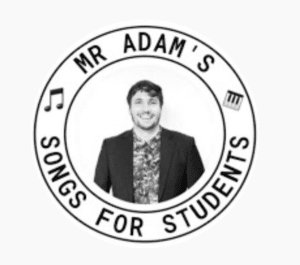Most Important Learning Theorists for ESL
As a teacher of English, it is important to be fluent in theories on Second Language Acquisition and learn about English as a Second Language Teaching Theorists if you want to take your students’ learning to the next level. Every teacher should have some rudimentary knowledge of Bloom’s Taxonomy of Learning and a general sense of different teaching paradigms so they can hone their teaching approach. Like a rudder to a ship, learning about English as a Second Language Teaching Theorists will steer your lesson plans by ensuring a strong theoretical underpinning.

Bloom’s Taxonomy
Generations of K-12 teachers and college instructors have based their teaching on this basic framework. Commonly known as Bloom’s Taxonomy, this framework has influenced countless teachers. The framework elaborated by Bloom and his collaborators consisted of six major categories: Knowledge, Comprehension, Application, Analysis, Synthesis, and Evaluation.
Lazanov
Developed the idea of “suggestopedia”. Involves the use of playing music, visualization, breathing exercises, environmental print, focus on communication rather than explicit “learning”.

Curran
Developed Community Language Learning: Students sit in a circle and communicate about any topic they wish, in first or second language. Teacher listens and/or translates when they use the
first language. Conversations are tape-recorded and written on the board, then teacher guides students to generalize about language structures. Also called counseling learning.

Cummins
Cummins advocated for the existence of a CUP. The term common underlying proficiency (CUP) has also been used to refer to the cognitive/academic proficiency that underlies academic performance in both languages.
Cummins believed in the linguistic and academic benefits of additive bilingualism for individual students provide an additional reason to support students in maintaining their First language (LI) while they are acquiring English. Maintaining their LI (first language) helps students remain connected to their community, culture and family. In addition, maintaining their LI, according to Cummins, helps them learn L2.
Asher
Believed that there is a silent period wherein learners must be able to process and comprehend their acquisition of a new language without having to reproduce it orally.
Invented Total Physical Response (TPR), wherein teacher models both words and actions together, and students repeat. The main idea is that words and actions naturally go together and by joining them through experience, students will understand the language more completely.
Bloomfield
A behavioralist who claimed linguistic phenomena could be observed and measured while isolated from its environment.
Fries
Structural Linguistics: Grammatical system whereby elements and rules of a language are listed and described, such as phonemes, words, and phrases. The elements are then ordered linearly and learned orally as a set of habits. Repetition is very important as a means of memorization. Contrastive Analysis: A means of emphasizing the differences, or contrasts, between the students native language and the language being learned.

Chomsky
Noam Chomsky is probably already well known to you. His theories of Universal Grammar (UG) have influenced English teachers, but they have also had an extensive influence on other subjects.
The basic idea behind Universal grammar (UG) is that a certain set of structural rules are innate to humans, independent of sensory experience. It is sometimes known as “mental grammar”. It is the theory in modern linguistics of the genetic component of the language faculty.
This theory states that there are basic principles that are shared by all languages. It also states that all people are born with the blueprint of learning the language. This theory is, referred to as Language Acquisition Device (LAD), argues that all people have an innate language acquisition device within their brain.
Piaget
Piaget’s theories have been so widely accepted that they may seem like common sense to you, but it is important to be aware of Piaget and also the criticism levied against his theories. His theory was, at its most basic, that Maturation Proceeds Learning. This is to say, we learn as we age. Or, put another way, certain ages are thee ideal time. to learn certain things. As you may intuit, the structuring of students by age and grades (elementary schools, middle schools, then high schools) are based on these theories. This might sound like common sense, but differs subtly from Vygotsky, who argued that there were no ideal ages to learn, rather Zones of Proximal Development that students pass through.
Piaget created Cognitive Developmental Theory
His theory was that children pass through an invariant sequence of stages, each characterized by different ways of organizing information and learning.
The Four Piaget stages are:
(birth to 2.5 years)- sensorimotor
(2.5 to 6 years)- preoperational
(6 to 12 years) –concrete operational
(12-19 years) –formal operations
Piaget’s idea that Maturation Proceeds Learning is also known as the readiness principle. The student must be exposed primarily to input that can be handled without difficulty. The input must be at the student’s actual level of development.
The key takeaway, according to Piaget, is that learning is subordinated to development and not vice-versa.
Vygotsky
Social-Cultural Theory– Knowledge is constructed between people.
Zone of Proximal Development (ZPD)
The gap between what students can do on their own and what they can do with the assistance of others. Both Piaget and Vygotsky were Constuctivists, meaning that they believed that knowledge itself is structured and developed from within the individual through active learning

Skinner
Skinner is tied to “operational conditioning” through the Skinner Box. Skinner argued that his research demonstrated that positive reinforcement is more effective at changing and establishing behavior than punishment. When you give students stickers on a sticker chart or other rewards, such as five stars in online classes, for correct answers, you are utilizing the Skinner theory of positive rewards.
Lazanov
Developed the idea of “suggestopedia”. Involves the use of playing music, visualization, breathing exercises, environmental print, focus on communication rather than explicit “learning”.

Curran
Developed Community Language Learning: Students sit in a circle and communicate about any topic they wish, in first or second language. Teacher listens and/or translates when they use the first language. Conversations are tape-recorded and written on the board, then teacher guides students to generalize about language structures. Also called counseling learning.
This is called the Counseling-approach, a teaching method in which the teacher acts as a counselor and a paraphraser, while the learner is seen as a client and collaborator. Note how this is different from other English as a Second Language teaching theorists, especially from the Vygotsky’s Scaffolding Method, where the student takes a mentor approach rather than collaborater.
Asher
James J. Asher, Ph.D. believed that there is a silent period wherein learners must be able to process and comprehend their acquisition of a new language without having to reproduce it orally.
This is extremely important to teaching English to young learners. Though we usually want to encourage student output at 70% (student) to 30% (teacher)- it is OK to ignore this for some young students. Let early students just mimic with TPR and listen. Young students go through a stage of absorbing and learning. It is important to explain this to parents, too, so they have appropriate expectations. Parents must understand that their child is learning English even if they don’t seem to be speaking it.
Invented Total Physical Response (TPR), wherein teacher models both words and actions together and students repeat. Asher argued that words and actions naturally go together and by joining them through experience, students will understand the language more completely.
Total Physical Response is very important for teaching English, especially when teaching English online. See below for some wonderful, engaging TPR examples. The kids listen and do the movements. The children repeat and gesture and mime and learn the meaning of the words by linking the movements to the words. This technique is great because it also gets kids up and moving and eliminates boredom.
TPR is the cornerstone of good online English teaching for young beginner students. You can see some great examples online, in videos such as this
More Resources to learn about Teaching Theories
https://www.slideshare.net/mobile/cristelsharna03/famous-esl-theorist
https://quizlet.com/8869336/esl-important-theorists-flash-cards/
Resources to Study for the State Licensure Exam for Teaching English as a Second Language
This blog post compiles the important terms in the field of Teaching English as a Second Language. Though it focuses on terms to know to pass the MTEL for Teaching English as a Second Language, it covers all the key terms of linguistics and grammar that any teacher of English should know.










